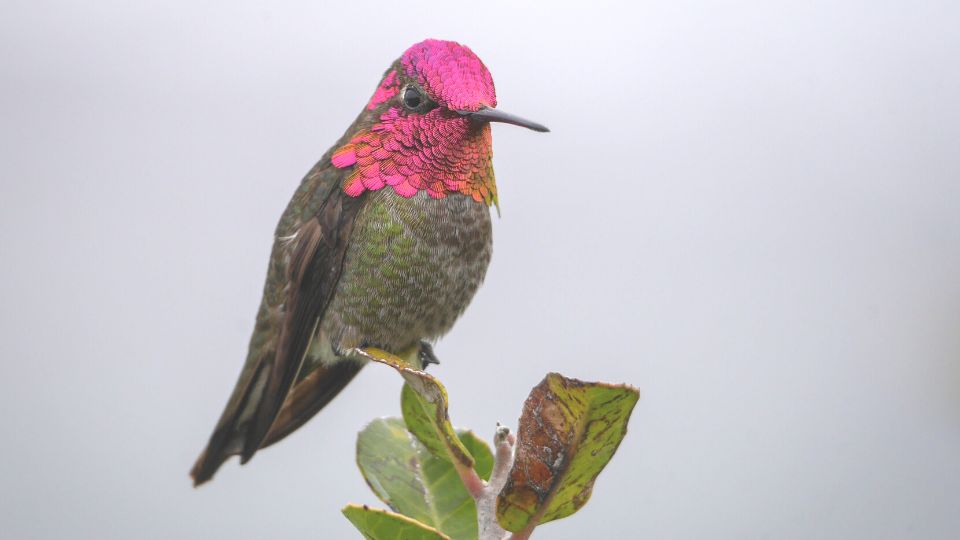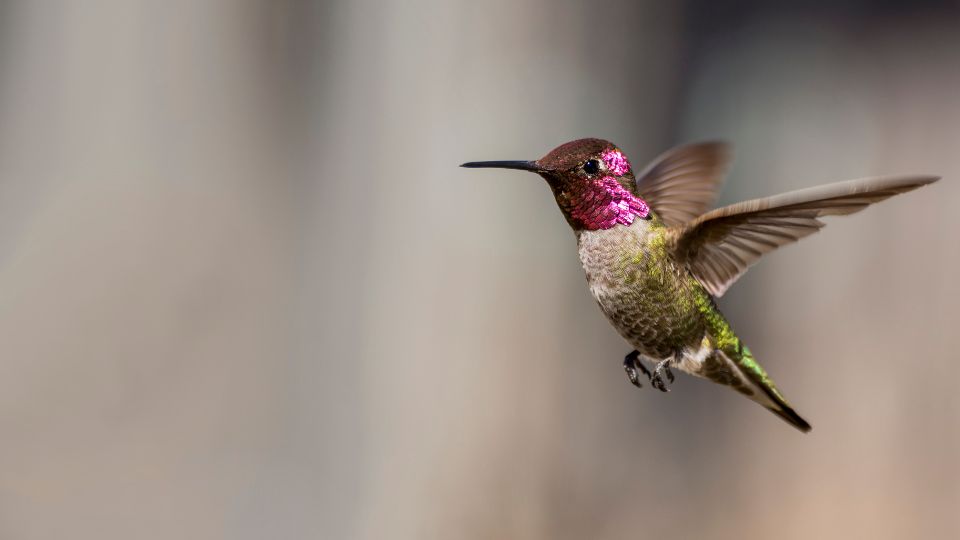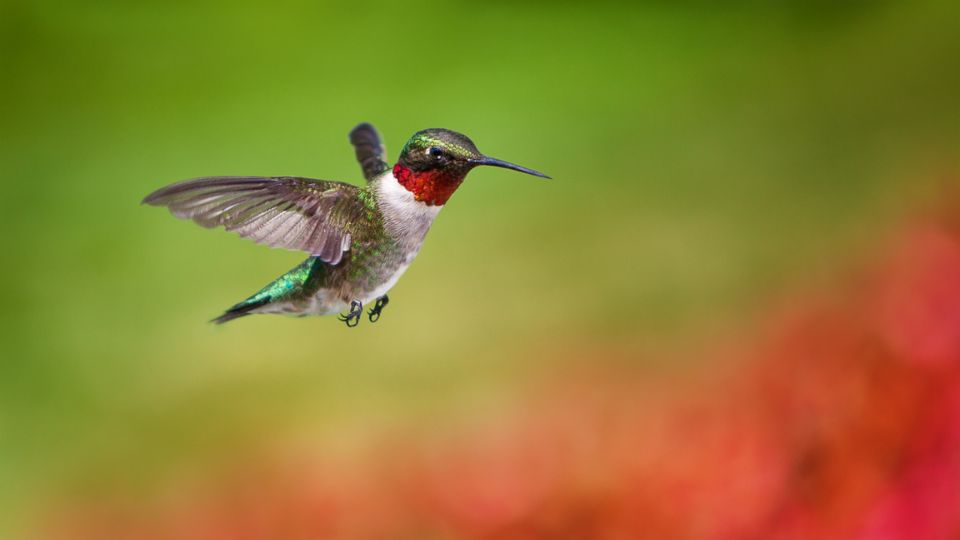Each year, people pay keen attention to changes in weather patterns so they can know the best times to see some of the most unique migratory birds.
It is essential to remember that climatic changes play a significant role in determining the migration patterns and the hummingbird migration routes they take. Most also migrate during the colder months in search of a warmer climate with abundant food supplies.
In North America, hummingbirds spend most of the winter months in Central America and Mexico until February.
Table of Contents
Spring Migration
As soon as spring starts, the sunlight increases, and several hummingbird activities occur. This is because as the weather gets warmer, the temperatures rise, the ice melts, plants begin to grow, flowers bloom, and the hummingbirds return. These changes in the climatic conditions are the main factors that lead to hummingbird sightings.
In the USA, people start noticing hummingbirds around February and March when the temperatures become warmer and the days become longer (by March).
During this time, the males are often the first to arrive in the southern states along the Gulf Coast. By March, the hummers can also be seen around Texas, Alabama, Louisiana, Florida, and Mississippi. During this time, people report seeing the Ruby-throated hummingbirds first.
On the other hand, people from the mid-West see their first hummingbirds around April. This is mainly because it takes the hummers nearly one month to travel halfway through the country because of the shifting weather patterns. This traveling time is also affected by the depletion of flowers and insects.
In the spring, the people in the northern part of the USA and Canada will see their first hummingbirds in May. These areas often witness fewer hummingbird sightings than the other regions; As a result, if one needs to see more hummingbirds, they can use their feeders to attract more of these beautiful tiny birds.
Sightings of the Backyard Birds

Ruby-throated Hummingbird
Ruby-throated hummingbirds return to their breeding grounds in eastern North America after a long journey back from Mexico and Central America. Ruby-throated hummingbirds are mainly found in the Eastern U.S. and Canada.

Rufous Hummingbird
Rufous Hummingbirds are commonly found in the Western U.S. and Canada. The Rufous hummingbird species travels to the farthest north up to Alaska of all other hummingbirds.

Other Species:
Hummingbird diversity is more significant in the western parts of the USA than in the east. The Western regions have more than 14 species of hummingbirds commonly found in the U.S. and Canada. The most common sighting is of Anna’s hummingbirds which can be spotted throughout the year.
Fall Migration
During the summer months, hummingbirds will spread out in different parts of the USA as most will enjoy the weather. However, by the end of August and September, the birds begin to move southwards in search of slightly warmer temperatures with more abundant food sources.
Often, the fall months are the hottest months of the year. This means that hummingbirds only eat twice, once in the early morning and then again in the late afternoon. They do this during their travels to gain as much body weight as possible.
For those who aim to catch a final glimpse of hummingbirds during the fall, you can check out the southern coast of the United States in September. This is because the birds can be seen to have gathered as they prepare to move southwards towards the Gulf of Mexico or Mexico itself. However, some end up staying in the United States.

When and where do hummingbirds migrate?
To get a good glimpse of these beautiful birds, one needs to watch them between March and September 1st. The reason is that during this time window, different states sight different hummingbird activities taking place. Also, people from other areas in the USA can see different species.
The most common hummingbird in the eastern half is the ruby-throated hummingbird. The Black-chinned and Anna’s hummingbirds dominate the western part of the United States, whereas the Rufous hummingbirds’ species are mainly found within the Pacific Northwest.

The Ruby-throated hummingbird arrives in the USA during spring, especially from late February to mid-March. Ruby-throats can be found in Georgia, south Texas, Alabama, Louisiana, and Florida. The birds move north to Texas, Mississippi, Arkansas, North Carolina, Tennessee, and South Carolina. People in these areas can sight these birds in such regions.
Birders in Oklahoma, Kentucky, West Virginia, Kansas, Missouri, Indiana, and Virginia can view the birds in mid-April as they move along their migratory patterns.
As spring progresses, more hummingbird migrants can be sighted moving toward Canada.
By Late April, the birds can be sighted in Ohio, Nebraska, Iowa, New York, Pennsylvania, New Jersey, and other parts of New England. Then in May, the birds can be seen in North and South Dakota, Michigan, Wisconsin, Maine, Vermont, Minnesota, and Canadian provinces like Ontario, Manitoba, Quebec, Saskatchewan, Nova Scotia, and New Brunswick, and Prince Edward Island. One can also spot other species during this time aside from the ruby-throated hummingbirds.
By July, August, and September, hummingbirds begin to move back into their fall migration pattern, and many of them can be sighted in Texas.
In September, Ruby-throats can sight in Louisiana, the South Texas coast, and Florida. In October, the birds can be sighted in the Gulf of Mexico en route through Mexico. Most of these birds follow the Texas coast when going back into Mexico, and this is because they aim to avoid tropical storms and hurricanes.
During the fall migration, hummingbirds embark on their journey back to the South in search of warmer climates.
 perched on a branch.” class=”wp-image-392″/>
perched on a branch.” class=”wp-image-392″/>The 6,000 kilometers journey south from Alaska is difficult for the Rufous hummingbird. This is because despite it being the shortest path to pass over in the Gulf is about 600 miles; there is no place to rest. This situation forces them to store enough fuel needed in the flight. As a result, any feeders filled out during these times will become a favorite summer nesting spot once again.
It should also be pointed out that hummingbirds use tremendous energy during this migration journey to the South. Weather conditions also alter their migration patterns as the flowers begin to bloom and the supply of nectar is available.

